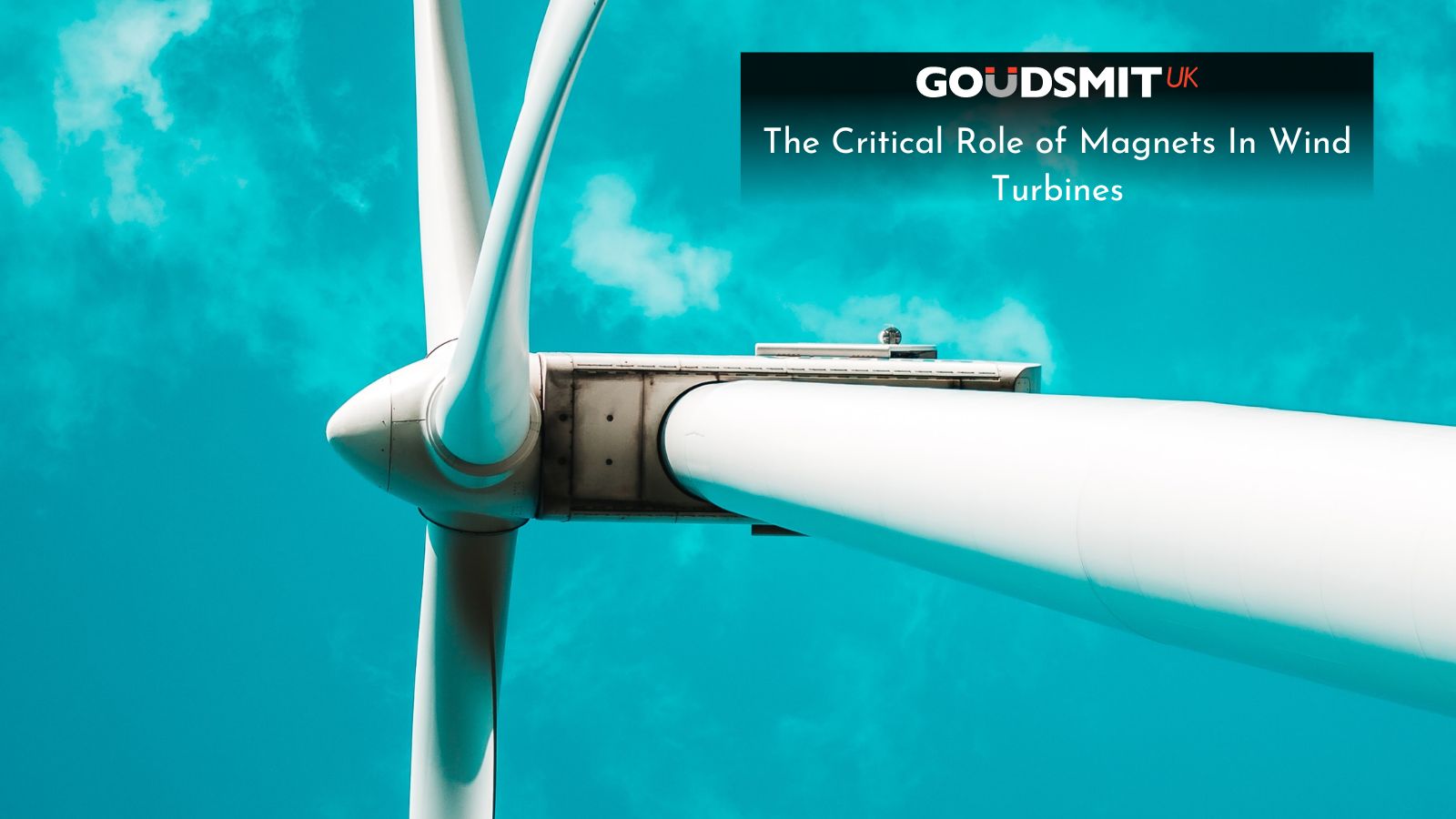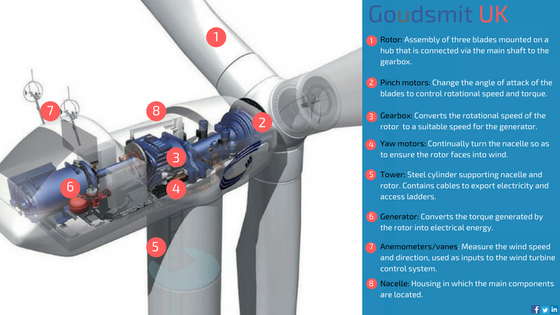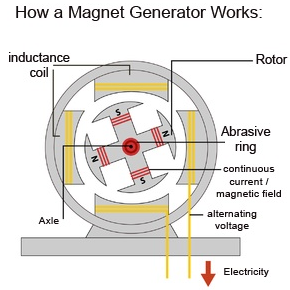As the demand for renewable energy surges, wind turbines have evolved into powerful sources of clean electricity. Today’s advanced wind turbines can supply energy to hundreds of homes with just a single unit.
A key component in these turbines is the permanent magnet, which plays a crucial role in generating electricity more efficiently.
In this article, we’ll break down how wind turbines work, the importance of permanent magnets in their design, and why rare earth magnets are the preferred choice in the industry.
Introducing wind turbines
Today’s wind turbines differ greatly from the earlier versions that date back to 1854. Today, one wind turbine alone can power between 225 to 300 households.
However, with more powerful and consistent wind at an offshore wind farm, the number could increase to over 400 homes. With that in mind, one might ask how do wind turbines work, and what role do permanent magnets play?
How wind turbines work
Regarded as a highly complex piece of machinery, wind turbines are becoming increasing popular in the renewable energy sector.
In addition, each part of the turbine plays an important role in how it functions and captures wind energy. In the simplest form, how wind turbines work is that:
- Strong winds turn the blades
- The blades of the fan are connected to a main channel in the centre
- The generator connected to that shaft converts that motion into electricity
The diagram below gives an indication as to how a wind turbine works and the parts that make it happen:
Permanent magnets in wind turbines
In every wind turbine and generator, you will find one or more incredibly strong permanent magnet. Additionally, the development of new, innovative technologies over recent years have inspired engineers to utilise permanent magnet generator (PMG) systems in wind turbines.
Therefore, this has eliminated the need for gearboxes, proving permanent magnets systems to be more cost-efficient, reliable and low-maintenance. Instead of needing electricity to emit a magnetic field, large neodymium magnets are used to produce their own.
Moreover, this has eliminated the need for parts used in previous generators, while decreasing the wind speed required to produce energy.
Why are rare earth magnets used in wind turbines?
The wind turbine industry prefers rare earth magnets for three main reasons:
- Permanent magnet generators do not need an external power source to initiate a magnetic field
- The self-excitation also means a bank of batteries or capacitors for other functions can be smaller
- The design reduces electrical losses
Additionally, due to the high-energy density permanent magnet generators offer, some weight associated with copper windings are eliminated along with problems of corrupting insulation and shorting.
How do the magnets work?
The permanent magnet generator is based on the premise that the use of electromagnetic forces produces electricity. It’s favourable among many engineers today due to its rather cheap nature and cost-effective power generation capacity.
To produce an output, wind-powered generators use wind, solar-powered generators use the sun’s heat and water-powered turbines need a continuous flow of water to work.
However, magnetically-powered generators don’t require major inputs to produce its output.
This is because the magnets within the generator use electromagnetic fields to convert magnetic energy to electricity. The below diagram provides a simpler means of explaining how the magnets work inside the generator.
Moving forward with the industry
The ever-growing demand for cleaner energies has caused the wind power industry to blossom in the last few years.
With their ability to greatly enhance the conversion of wind power to electricity, permanent magnets have become an essential component in the design of wind turbine generators.
Moreover, permanent magnets will continue to be a crucial component in this industry, which is why selecting the most adequate magnetic material, grade, and the correct manufacturing process is critical for optimum performance.
Goudsmit UK can accompany you from the design, manufacture, and assembly right through to the logistics of these permanent magnet assemblies.
Goudsmit UK
Contact us today for more information at info@goudsmit.co.uk or on +44 (0) 2890 271 001.
For more information download our products and services brochure.









